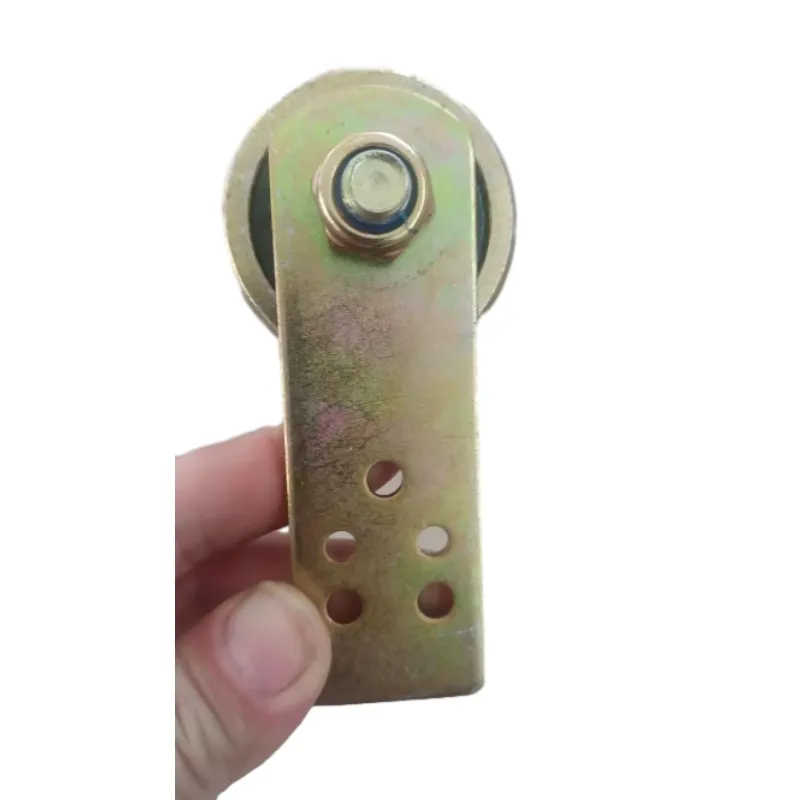
Jan . 01, 2025 09:51 Back to list
Understanding the Fundamentals of Cylindrical Bearings in Mechanical Applications
Understanding Cylindrical Bearings A Key Component in Machinery
Cylindrical bearings are essential mechanical components that play a pivotal role in various industrial applications. These bearings support radial loads and allow for rotational motion between components. Their design and functionality make them critical in numerous machines, from simple devices to complex industrial equipment.
What Are Cylindrical Bearings?
Cylindrical bearings, also known as cylindrical roller bearings, feature cylindrical rollers that are arranged in a way to minimize friction and wear during operation. Unlike traditional ball bearings that use balls between the inner and outer races, cylindrical bearings employ rollers that distribute the load more evenly. This design results in greater load-carrying capacity and improved stability, especially under heavy loads and high-speed conditions.
Design Features and Types
Cylindrical bearings come in various designs, including single-row, double-row, and multi-row configurations, tailored for specific applications. The most common form is the single-row cylindrical roller bearing, which comprises an inner ring, an outer ring, and cylindrical rollers. The design allows for radial load handling, and the cylindrical shape of the rollers minimizes point contact, thus offering a larger contact area and improved resistance to wear.
The bearings can also be categorized based on their cage and sealing options. Some variations include
- Open Type No seals or shields; suitable for clean environments where lubrication is adequately provided. - Sealed Type Equipped with rubber or metal seals to protect the bearing from contaminants and retain lubricant; ideal for harsh operating environments. - Cage Type Features a cage that organizes the rollers, reducing friction and preventing roller skewing during movement.
Applications of Cylindrical Bearings
Cylindrical bearings are widely used across various industries due to their robustness and adaptability. Common applications include
1. Automotive In vehicle engines and transmissions, these bearings support crankshafts, camshafts, and gearbox components, facilitating smooth rotation and minimizing wear. 2. Aerospace Used in aircraft engines and landing gear systems, cylindrical bearings provide high strength-to-weight ratios and durability under extreme conditions.
cylindrical bearing

3. Manufacturing Found in machinery like lathes and milling machines, they ensure precision and efficiency in manufacturing processes.
4. Wind Turbines In the renewable energy sector, cylindrical bearings help support the rotating shafts, enhancing the reliability and performance of turbines.
5. Industrial Equipment These bearings are integral to conveyor systems, pumps, and compressors, contributing to the smooth operation of various mechanical systems.
Advantages of Cylindrical Bearings
Cylindrical bearings offer several advantages over other bearing types
- Higher Load Capacity Their design allows them to accommodate heavier loads, making them an ideal choice for applications requiring significant support. - Reduced Friction The contact area between rollers and races is larger, which helps in reducing friction and enhancing operational efficiency.
- Improved Durability With better load distribution and reduced wear, cylindrical bearings typically have a longer service life compared to traditional bearings.
- Versatile Designs Their adaptability to various environments and configurations makes them suitable for a wide range of applications.
Maintenance and Considerations
While cylindrical bearings are praised for their durability, proper maintenance is essential to ensure longevity. Regular lubrication, monitoring for wear, and timely replacement are crucial practices. Users should consider factors such as load conditions, operating speeds, and environmental factors when selecting the appropriate cylindrical bearing for specific applications.
In conclusion, cylindrical bearings are vital components that enhance the functionality and efficiency of machinery across diverse sectors. Their unique design, robust performance, and adaptability make them indispensable in driving technological advancements and maintaining operational excellence in various industries. As industries continue to evolve, the role of cylindrical bearings will remain significant, underscoring the importance of understanding and optimizing these crucial mechanical elements.
Latest news
-
Grooved Ball Bearing Design and Functionality
NewsJun.04,2025
-
Concrete Mixer Bearing Load Capacity Testing
NewsJun.04,2025
-
6004 Bearing Dimensions in Robotic Joint Designs
NewsJun.04,2025
-
Advantages of Single-Row Deep Groove Ball Bearings
NewsJun.04,2025
-
Applications of Deep Groove Ball Bearings in Automotive Systems
NewsJun.04,2025
-
Innovations in Bearing Pressing Machine Design
NewsJun.04,2025
